Biofertilizers derived primarily from animal and plant wastes, and nitrogen-fixing cover crops constitute organic farming. Organic agriculture reduces environmental impacts by reducing pesticide usage, soil erosion, nitrate leaching, and recycling animal waste into the farm. Known as a tender-leafed herbaceous annual, Spinach is a member of the Amaranthaceae family. A few other vegetable crops in this family are Swiss chard and beets.
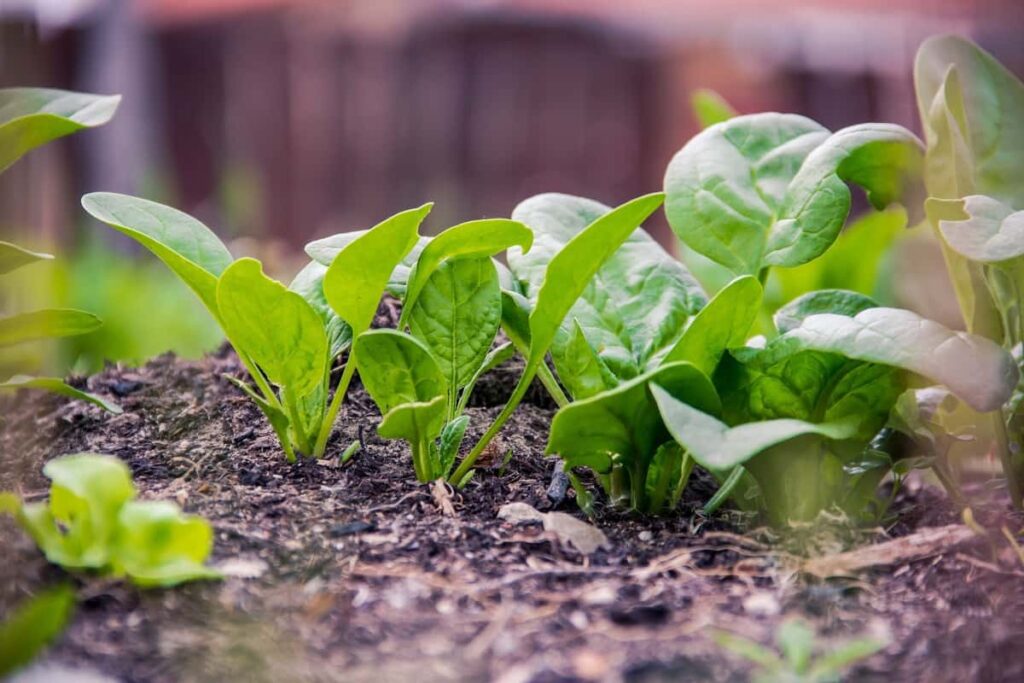
The Hindi name for it is “Palak.” In addition to being rich in iron, vitamins, and antioxidants, it is also highly nutritious. A spinach plant is grown for its leaves, which are eaten as vegetables. Whether fresh or cooked, Spinach has a tender bite and mild flavor. It is also packed with antioxidants and nutrients.
Growing Spinach organically in Telangana
Government schemes to support organic farming in Telangana
- The government is encouraging the preparation of vermicompost in gram panchayats under the Palle Pragathi program, apart from exploring the possibilities of turning the waste from maize and other crops into compost fertilizers. Efforts are to turn nearly 6,600 tonnes of organic waste produced by Hyderabad city into CT Compost. Organic fertilizers were supplied to about 16 lakh acres at subsidized prices in 2021.
- Telangana Organic Certification Authority (TOCA) in the State gives organic certification to farmers and trade bodies. It inspects and certifies agricultural products and food processing by assessing the conformity of products with NPOP standards and other international standards.
- The Seed Village Programme is a part of the Sub Mission on Seeds and Planting Materials (SMSP) under NMAET (National Mission on Agriculture Extension and Technology). Through the Seed Village program, farmers can obtain quality seeds of notified varieties at affordable prices at their places, and new seed varieties will be multiplied in a shorter time according to crop conditions in that Mandal/district.
- The government gives a subsidy of Rs 4,500 per acre to each farmer. It uses MNREGA (Mahatma Gandhi National Rural Employment Guarantee Act) to help farmers. The government of Telangana has decided to promote organic farming by making agricultural inputs available to farmers and by training farmers.
Soil requirements for growing Spinach organically
Although Spinach grows well in average soil, it thrives in soils rich in organic matter. In general, soil type and pH are not restrictive factors when growing Spinach. Any soil with good drainage can be used to grow it. However, it produces good results on sandy loam and alluvial soil. For spinach cultivation, avoid acidic soils as well as water-logged soils. A pH of 6.5 to 6.8 is recommended for the growth of Spinach in sandy loam soils.
Keeping in mind that each field has unique needs is important. Soil analysis is therefore recommended before planting by growers. They can also consult a local licensed agronomist for a rational field preparation plan. Some farmers restore N levels by applying well-rotted cow manure and plowing well some days before seeding.
In case you missed it: Best Practices to Grow Spinach/Palak at Home: Check How this Guide Helps Beginners
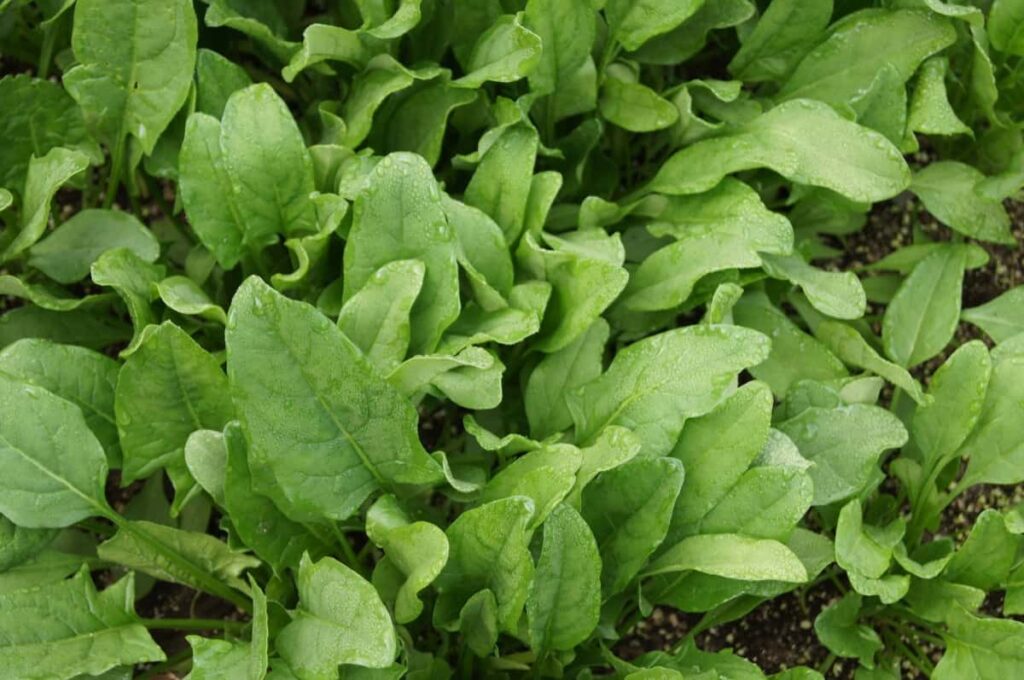
Climate requirements for growing Spinach organically
The climate in which Spinach grows should be cool. There is a minimum germination temperature of 2°C, a maximum germination temperature of 30°C, and an optimum range of 7°C to 24°C. Temperatures as low as -9°C are not a problem for young plants. Temperatures between 15°C and 20°C are optimal for crop growth, with a minimum of 10°C and a maximum of 32°C. Growing Spinach in Telangana begins in the spring and matures between the 1st of June and mid-July.
The crop is also seeded in August and early September (up to 30-35 days before the first fall frost) for harvest in September and October. It can also be overwintered if given proper protection and favorable weather (a snow cover). When the days are both long and hot, spinach bolts rapidly. Depending on the temperature, moisture, fertility, etc., plants reach market size within 40 to 70 days. As a shallow-rooted plant, Spinach needs regular moisture.
Seed requirements in growing Spinach organically
- Before sowing seeds, they are soaked in water overnight.
- Seeding Rate: For winter season use, the seed rate is 4-6 kg, and for summer crop use, the seed rate is 10-15 kg per acre.
- Seeds germination will be better in temperatures 5°C to 20°C.
Planting Spinach
To have a healthy crop, adopt recommended agronomic practices concerning timely sowing, seed rate, row spacing, fertilizer application, irrigation management, etc. In addition, to achieve good growth and maximize their yields, growers may consider the following factors.
- Spinach seeds should be planted 12 to 1 inch (1 to 2.5 cm) deep.
- The spacing between rows should be 7-11 inches (20-30 cm), and between plants in rows should be 3 to 6 inches (7-15 cm).
- Spinach is irrigated immediately after it is sown.
- Thinning is used to encourage plants to produce a great leaf surface. This is the most common technique when growing Spinach for the processing market.
- Spinach should not be planted on the same plot over and over because this causes spinach pests and diseases to build up in the soil. Instead, rotations should be done with other crops like beans, peas, lettuce, tomatoes, potatoes, etc.
In case you missed it: Role of Plant Breeding and Biotechnology: Crop Improvement in Agronomic Crops and Horticulture Crops
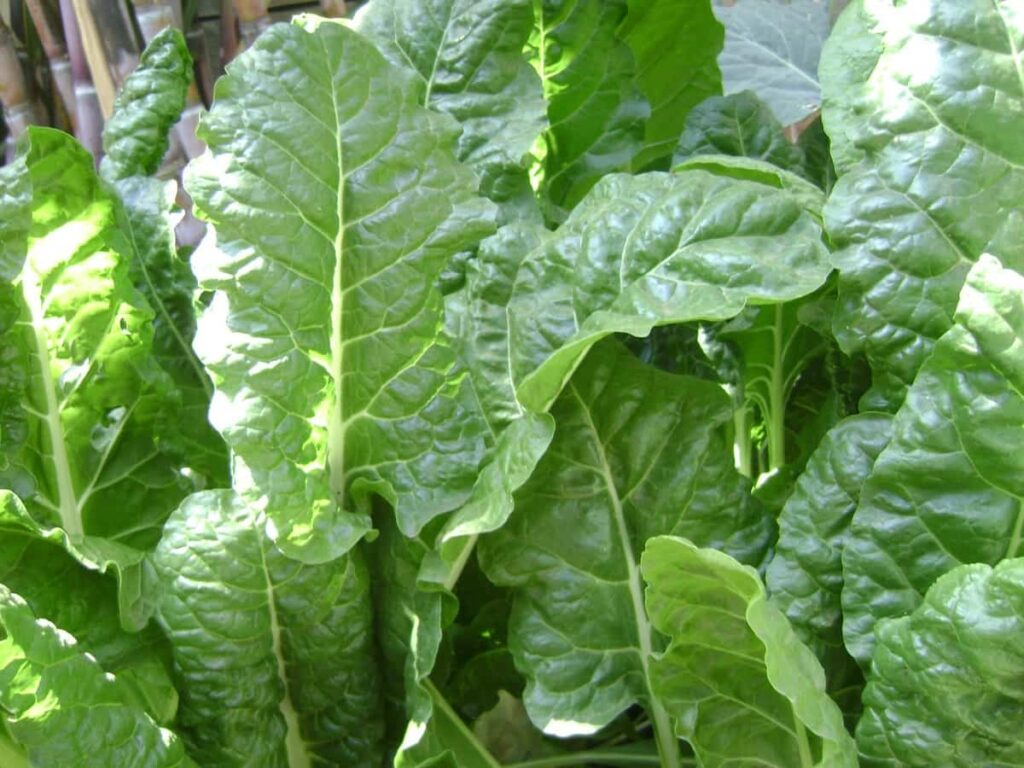
Seed production
- For seed production, use the spacing of 50 cm x 30 cm. Keep an isolation distance of 1000 m around the palak seed plot.
- Skip one row after every five rows; it is essential for field inspection.
- Remove diseased plants; also remove plants showing variation in leaf characteristics.
- Harvest crop when seed stalks turn brown. After harvesting, keep the plant in the field for curing and drying purposes for a week.
- After proper drying, for seed purposes, the threshing of the crop is to be done.
Irrigation for growing Spinach organically
There is a relatively shallow root system on spinach plants. Therefore, it prefers smaller, more frequent irrigation sessions to produce an acceptable yield. Proper seed germination and good growth require adequate moisture in the soil. Pre-sowing irrigation is recommended if the soil is not adequately moist during sowing. After sowing, irrigation should be given. Summer irrigation should be applied every 4-6 days, while winter irrigation should be applied every 10-12 days.
Watering on leaves will lead to disease and quality degradation; do not over-irrigate. The use of drip irrigation is beneficial for spinach cultivation. It is highly recommended that Spinach crops be irrigated in the early morning or late afternoon. Sprinklers are used to irrigate more than half of the world’s production. However, extensive sprinkler irrigation can promote leaf-spotting disease outbreaks in some cases.
Organic fertilizers for growing Spinach organically
When choosing an organic fertilizer for spinach plants, there are a few things to consider. The type of plant that is growing should be considered first. Some plants require more nitrogen than others, such as tomatoes. Since Spinach is a nitrogen-loving plant, use a fertilizer high in nitrogen. Another thing to consider is the spinach growth plants stage.
- Compost: Mix the compost with water at 1 part compost to 10 parts water. Then, apply the mixture to your spinach plants at the base of the plant and around the roots. Be sure not to overfertilize, as this can damage your plants.
- Animal manure: The manure should be spread around the base of your spinach plants. The soil can also be amended with it before planting. It is important to water the area well so that the manure can break down and release nutrients into the soil. Throughout the growing season, repeat this process every few weeks as needed.
Alternatively, mix it with water at about 1:10. So, for every 10 gallons of water, add 1 gallon of goat manure. Then, apply the mixture to your spinach plants using a watering can or sprayer.
- Blood meal: This organic fertilizer is high in nitrogen, essential for leafy greens like Spinach. To use blood meal, mix it into the soil around your plants. For best results, do this every few weeks throughout the growing season.
In case you missed it: Fertilizer Schedule for Okra: Organic, Chemical, How and When to Apply
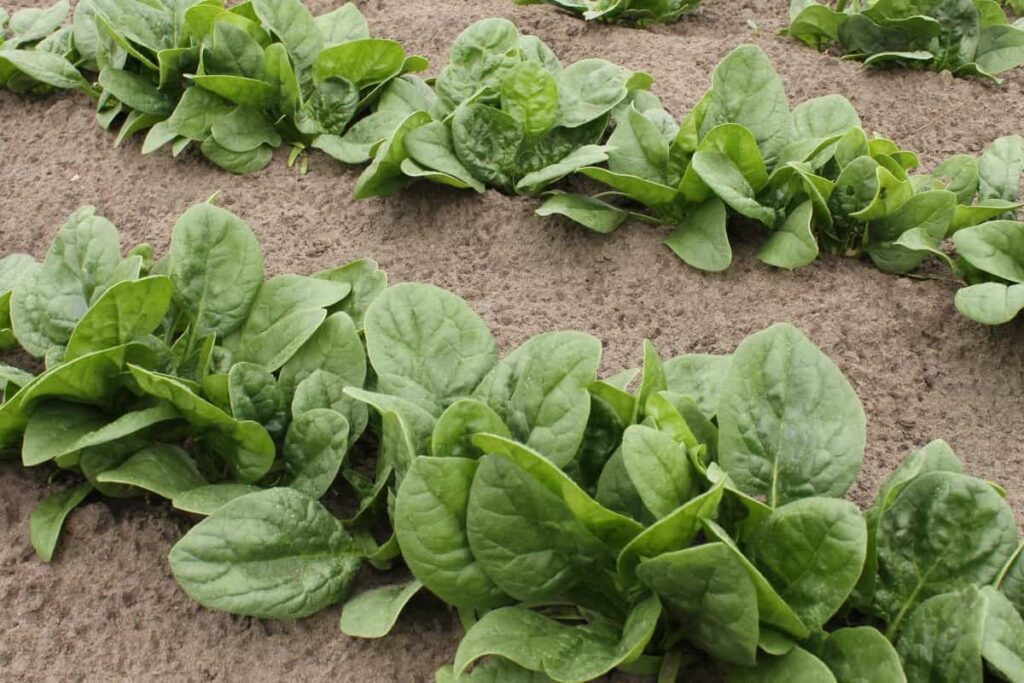
Mulching growing Spinach organically
The mulch keeps the soil moist and suppresses weeds. As the mulch decomposes, it releases nutrients into the soil, which the crop absorbs. As well as preventing soil erosion, it also improves water retention. Mulches from organic materials decompose naturally, such as bark chips, grass clippings, wheat or paddy straw, leaves, compost, rice hulls, and sawdust.
Pests in Spinach
Leaf-eating caterpillar
Damage symptoms
- Young larva feeds on the leaves. Internal tissues are eaten severely and completely hollowed out.
- While feeding, the caterpillar thrusts its head inside, leaving the rest of the body outside. Fed leaves, shoots, and buds.
Control
- Use neem oil in higher concentrations and occasionally spray the leaves with a soap solution.
- Hand killing is the most effective method if you find them on your plants.
- Most caterpillar species have several species of parasitic wasps or flies that attack them. Look for parasite cocoons next to caterpillars, darkened caterpillar eggs, or exit holes in dead caterpillars.
- General predators include birds, assassin bugs, lacewings, predaceous ground beetles, and spiders.
Beet armyworm
Damage symptoms
- Larvae feed on foliage. Young larvae feed gregariously and skeletonize foliage.
- As they mature, larvae become solitary and eat large irregular holes in foliage.
- They also burrow into the crown or center of the head of lettuce or the buds of cole crops.
In case you missed it: Fertilizer Schedule for Home Garden: Organic, Chemical, How and When to Apply
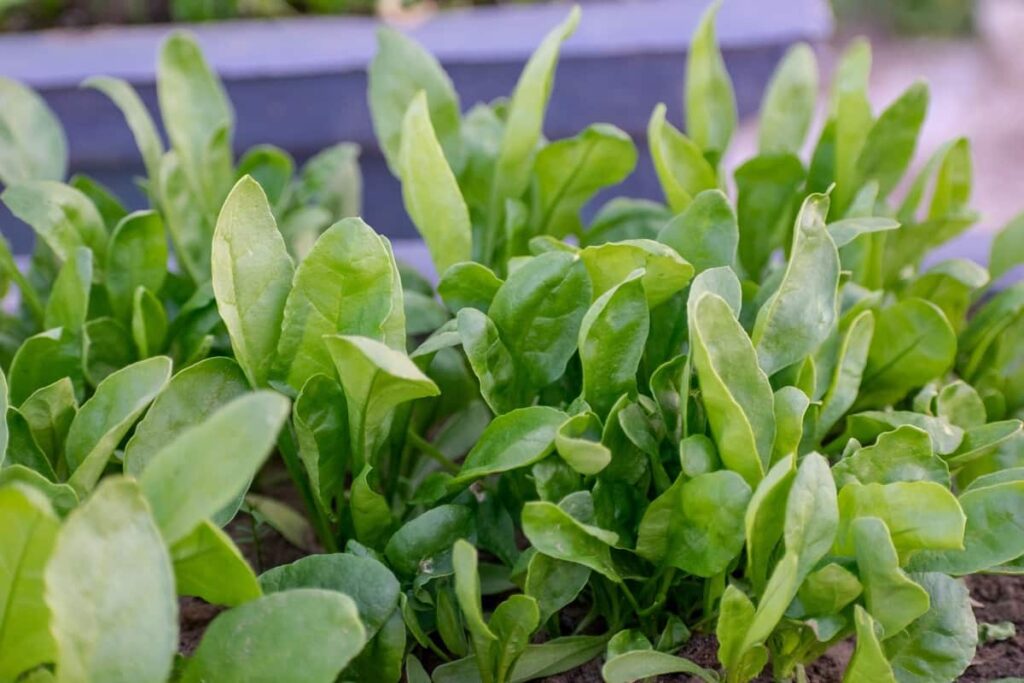
Control
- Flower bugs, ants, parasitic wasps, flies, and spiders attack eggs or larvae.
- Entomopathogenic fungi, Bacillus thurigiensis, NPV, and nematodes will infect larvae and adults. Botanical insecticides based on fresh Neem, lemongrass, and ginger are also effective.
- Both eggs and young larvae can be controlled with the foliar application of 5% cottonseed oil.
- Pheromone traps can also be used to disrupt mating and inhibit or eliminate reproduction (up to 97% efficiency).
Spinach crown mite
Damage symptoms
- The larvae feed primarily on newly expanding leaves in the plant’s heart.
- The ability of these pests to harm crops decreases as plants grow larger and faster.
- Deformed leaves or small holes in expanding leaves are signs of damage.
Control
- A high organic matter soil and cool, wet conditions are generally associated with crown mite damage. Mite populations can be reduced by promptly destroying harvested fields and by sanitizing fields before planting.
- Any chemical control has to reach down into the plant’s crown to be effective. Pyrethroids and Neem are possible chemical controls.
Diseases in Spinach crops
Downy Mildew
Damage symptoms
- Initial symptoms of downy mildew consist of dull to bright yellow spots that form on cotyledons and leaves of all ages. With time, these spots can enlarge and become tan and dry.
- Close inspection of the leaf’s underside often reveals the fungus’s purple growth (sporangia and sporangiospores).
- If disease development is extensive, leaves appear curled and distorted and may have a blighted effect due to numerous infection sites.
Control
- You can control this disease by using tolerant cultivars, rotating crops every three years, and treating seeds with hot water. In addition, overhead irrigation should be avoided.
- As a barrier, mulch restricts the spread of fungal spores from the soil to plants.
- Downy mildew can be treated effectively with baking soda. Mix one tablespoon of baking soda with 1 liter of water (ideally rainwater or mineral water). This mix should be sprayed on the top and underside of all leaves during dry weather.
Fusarium Wilt and Root Rot
Damage symptoms
- Lower (older) leaves are often first affected by disease symptoms later in the growing season.
- In addition to the older leaves, the younger leaves will also be affected, and the plant will eventually die. Many times, only one branch or side of the plant shows symptoms.
- Yellowing and wilting begin with older leaves. As a result, the fungus attacks feeder roots before attacking tap roots.
In case you missed it: Fertilizer Schedule for Fruits: Organic, Chemical, How and When to Apply
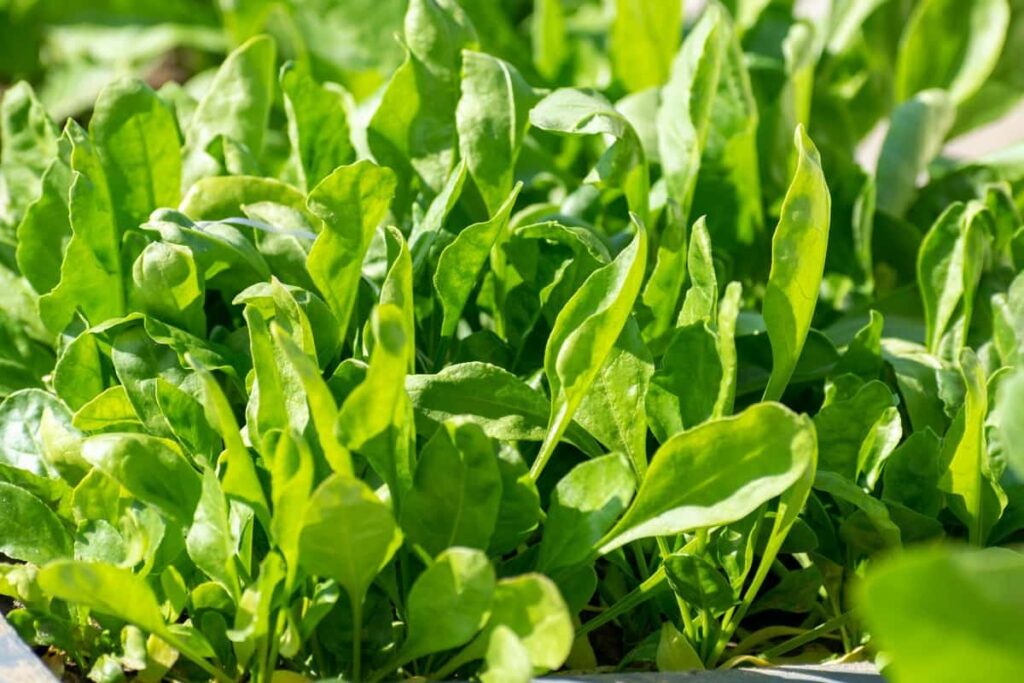
Control
- Avoid planting crops during the summer months (mid-June to late August). There is some tolerance in the cultivar “Packer.”.
- When available, plant-resistant varieties.
- Sterilize pruning clippers between cuts using bleach and four parts water (one part bleach, four parts water).
Spinach Blight or Yellows
Damage symptoms
- Root rot consists of poor seed germination, pre-emergence death of seedlings, post-emergence death of newly emerged seedlings, stunted plants, yellowed lower leaves, general poor growth, wilting, and eventual collapse and death of older plants.
- Young inner leaves become mottled, changing yellow, and finally, killed. Older leaves gradually turn yellow.
- While root rot organisms can infect all stages of Spinach, newly emerging plants and young seedlings are very susceptible.
Control
- Keep host weeds cleared from the vegetable patch before planting and during the growing season.
- Protect plants from the sucking activities of aphids by using horticultural oil spray and encouraging beneficial insects such as ladybugs and spiders.
Harvesting and Storing Spinach
Spinach leaves can be harvested at any size after six to eight weeks after planting. Cut off the outer leaves carefully or cut off the entire crop about an inch from the soil to harvest the leaves. Harvesting the whole plant triggers the plant to grow back quickly, so you can get several complete cuttings from each plant, even if you selectively cut the outer leaves.
The leaves of plants ready to bolt will become bitter as they age. So be sure to harvest them before they bolt. When spinach leaves have been harvested, they should be rinsed in cold water, spun until dry, and stored in cold storage for up to a week. Dehydrating or blanching and freezing the leaves are also options.
Conclusion
Andhra Pradesh, Telangana, Kerala, Tamil Nadu, Uttar Pradesh, Karnataka, Maharashtra, West Bengal, and Gujarat are leading producing states of Spinach in India. Organic spinach yields are about 25 percent lower than conventionally grown Spinach, although this can vary greatly from crop to crop. These are counterbalanced by higher food costs for consumers and generally lower yields.
- How to Raise Pigs in Your Own Backyard: A Comprehensive Guide
- Budget Friendly Sheep Shed Ideas: Cheap and Low-Cost Tips
- How Much Do Cattle Farmers Make: Revenue Streams in Cattle Farming
- Management Pests and Diseases in Your Cotton Field
- Sheep Farming Business Plan for Beginners
- Aquaponic Farming at Home: A Step-By-Step Guide
- Profitable Village Farming Business Ideas in 2024
- High-Yield Aquaculture: Fast-Growing Fish for Farming
- Effective Fish Pond Construction Techniques for Beginners
- Irrigation and Water Management in Pineapple Farming
- Blossom to Harvest: Mastering Flowering and Pollination in Papaya Farming
- Pig Fattening Essentials: From Selection to Sale for Beginners
- Raising Wagyu Cattle: A Complete Guide for Premium Beef Production
- Soil Types and Their Water Holding Capacity
- Optimizing Irrigation Schedules for Coconut Groves for Enhanced Yield
- Espresso Your Garden: Coffee Grounds for Healthier Acid-Loving Plants
- The Best Soil Mix for Snake Plants: How to Mix Your Own Snake Plant Soil
- Green Thumb Success: Expert Tips for Cultivating Greenhouse Beans All Year Round
- Bloom All Year Round: The Ultimate Guide to Indoor Hyacinth Care
- Eco-Friendly Gardening: How to Make Liquid Fertilizer from Kitchen Waste
- Ultimate Guide to Grow Anise in Pots: Explore Seed Propagation to Harvesting
- Guide to Raising Chester White Pigs: Discover Breed Facts to Growth Management
- Mastering the Elegance: The Ultimate Guide to Weeping Cherry Tree Care, Planting, and Maintenance
- Ultimate Guide to Planting Garlic in Grow Bags: Growing Strategies for Beginners
- How to Fix Spider Plant Leaf-Related Problems: Natural and Organic Remedies
- 10 Reasons Why Your Tulsi Plant is Shedding Leaves: Home Remedies and Solutions
- Optimizing Growth and Yield: The Advantages of Palm Bunch Ash Fertilizer
- Utilizing Neem Oil Extract as a Natural Pesticide for Hydrangea
- From Soil to Harvest: Various Ways in Which Farmers Can Use AI Tools
- Steps to Encourage and Induce Citrus Flowers: A Comprehensive Guide
- How to Fix Snake Plant Leaf-Related Issues: Natural and Organic Remedies
- Transform Your Garden into a Fragrant Oasis with Raat Ki Rani (Night Blooming Jasmine)
- Discover the Ideal Chicken Breeds for Philippine Farms
- How to Create a Poultry Egg Farm Business Plan for Profits
- Grow Lemon Cucumbers Like a Pro: Insider Techniques for Bountiful Yields
- Ultimate Guide to Caring for Your Pink Princess Philodendron: Tips for Thriving Variegation
